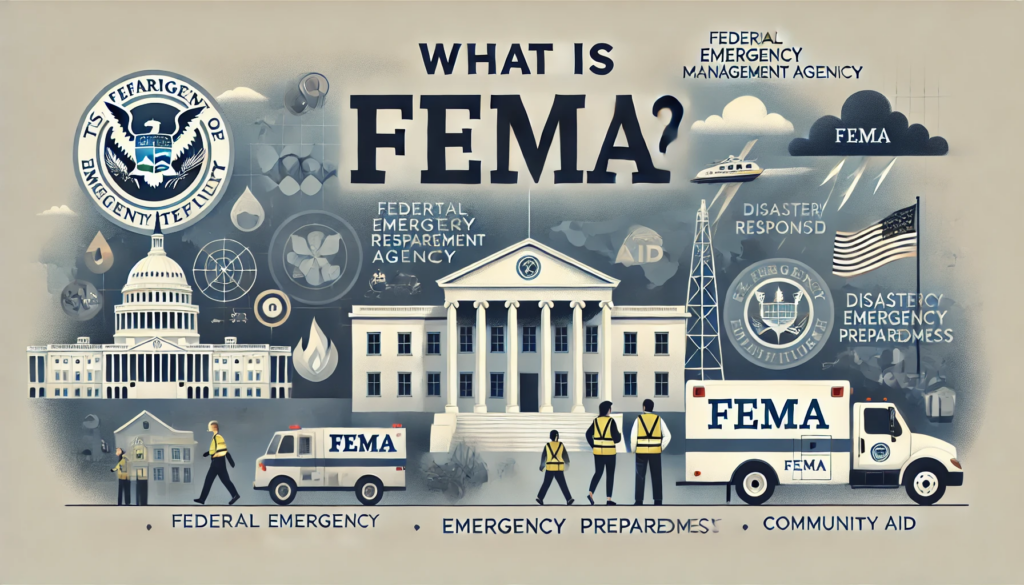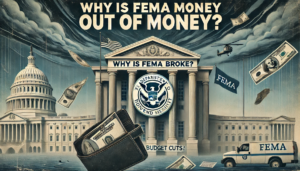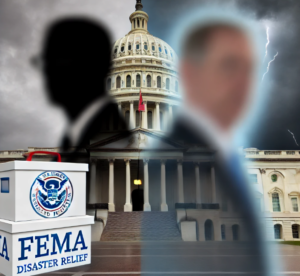
Disasters happen. Fires, floods, hurricanes, and earthquakes can strike without warning. When they do, people need help fast. That’s where FEMA steps in. But what exactly is FEMA? Let’s break it down.
What Does FEMA Stand for?
FEMA stands for the Federal Emergency Management Agency. It’s part of the U.S. Department of Homeland Security (DHS). Think of it as the federal government’s rapid response team for disasters. FEMA’s job is to help people and communities recover from emergencies—big or small.
The agency was officially created in 1979. Over the years, FEMA has evolved and expanded. After the 9/11 attacks, it became part of the DHS to better coordinate national responses to disasters and terrorism threats. Now, whenever there’s a crisis—whether it’s a hurricane sweeping through the Gulf Coast or wildfires raging in California—FEMA gets the call.
What Does FEMA Do?
FEMA helps before, during, and after emergencies. Its mission goes beyond simply sending supplies and rescuers to disaster zones. Here’s a closer look at what FEMA does:
- Prepares for disasters. FEMA offers training, planning resources, and public education. They help local communities create emergency response strategies so they’re better prepared when disaster strikes. Ever seen those public service announcements about having a “go bag” or emergency supplies? That’s FEMA’s influence at work.
- Responds in emergencies. When disaster strikes, FEMA acts as a coordinator. It works with state and local governments, along with non-profits like the Red Cross, to provide immediate aid. This can include food, water, medical care, and shelter. If you’ve ever heard of FEMA trailers—temporary housing for people displaced by disasters—this is part of their response.
- Helps with recovery efforts. FEMA offers grants and low-interest loans to individuals and businesses affected by disasters. They also help rebuild public infrastructure like roads, bridges, and schools. The recovery phase can last years, and FEMA stays involved to make sure communities get back on their feet.
- Mitigates future risks. FEMA runs programs to reduce the impact of future disasters. For example, they fund efforts to improve flood control systems or promote better building codes in hurricane-prone areas. The goal is to make sure that when disasters happen again—and they will—the damage is minimized.
Who Funds FEMA? Where Does FEMA Money Come From?
FEMA doesn’t print money. It relies on federal funding. Most of the money FEMA uses comes from Congress through annual budget allocations. Think of it as a slice of the federal budget set aside for disaster management. When Congress passes the federal budget each year, it includes money earmarked specifically for FEMA.
But there’s a catch. Some disasters are so devastating that FEMA’s regular budget isn’t enough. When that happens, FEMA can request additional emergency funding. Congress often approves these funds quickly through disaster relief bills, ensuring FEMA has the resources it needs to respond to major catastrophes.
Additionally, FEMA works with state and local governments, which often share the cost of specific disaster recovery efforts. For instance, a state government might cover 25% of the cost of rebuilding a public building, while FEMA picks up the remaining 75%.
What’s Next for FEMA?
FEMA’s job isn’t getting easier. Climate change has made extreme weather events more common and more severe. Hurricanes, wildfires, and flooding are hitting harder and more frequently than ever before. This means FEMA’s role is becoming even more critical in the years ahead.
The agency will need to keep evolving—partnering with local communities, improving emergency technology, and advocating for smarter rebuilding practices. FEMA can’t stop disasters from happening, but it can help us prepare for them, survive them, and rebuild stronger.
At the end of the day, FEMA exists to support us when we’re at our most vulnerable. Whether it’s a flood in a small town or a hurricane tearing through a major city, FEMA’s job is to bring hope, resources, and recovery.






